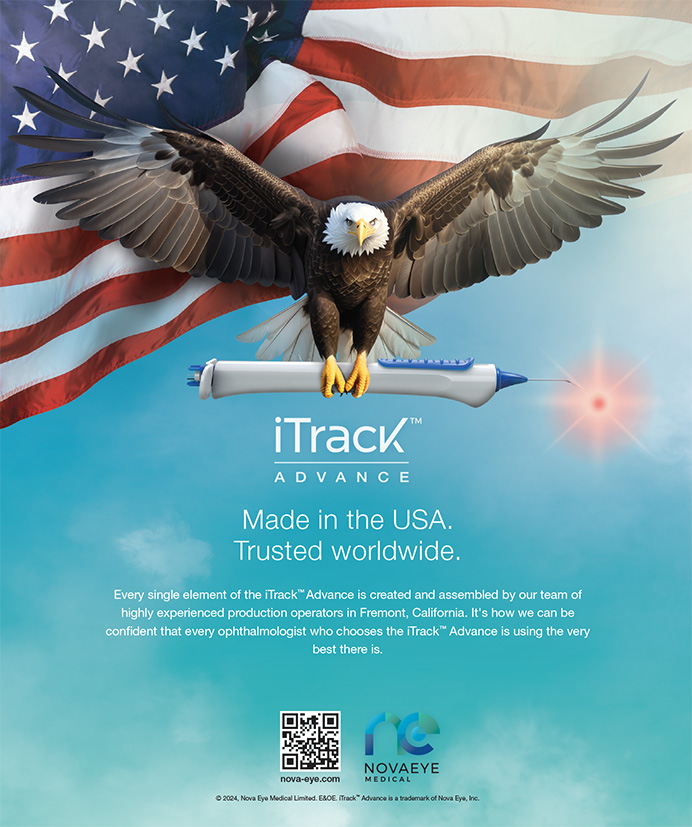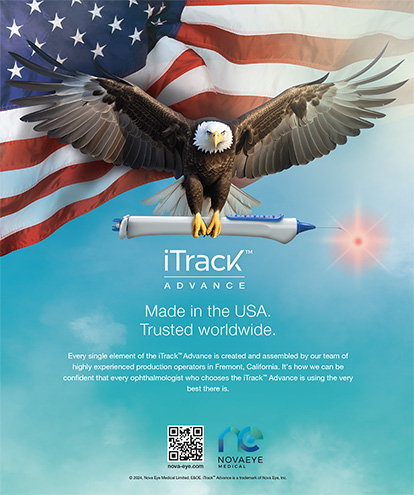You are a major contributor in the area of optical biometry.What do you enjoy most about researching this topic,and what is your current focus in optical biometry?
After a surgeon is comfortable with his or her surgical technique, the next thing that must be mastered is IOL power calculation accuracy. This is what makes the difference between a good surgeon and an excellent surgeon. With the availability of multifocal IOLs, our duty is to give patients what they demand and are paying for— emmetropia. Over the past 10 years, we have worked hard for every 0.10 D of precision achieved. We were only able to become more accurate through a greater understanding of the sources of error, improvements in eye axiometry through optical biometry, and better corneal measurements with optimized autokeratometers and Scheimpflug tomographers.
I enjoy understanding the optics of the pseudophakic eye and finding solutions for day-to-day problems based on optical theory rather than empirical approaches. I am in the process of validating my own IOL calculation formula in a database provided by other surgeons. The formula is a second-order raytracing formula with a multivariable IOL position-predicting algorithm. I have used it for the past 2 years in my own cases and have found that it performs better than other formulas, both in normal and unusual eyes (eg, those with keratoconus or after LASIK, PRK, or RK).
Have recent trends influenced your surgical technique or the technologies that you use?
Over a short time, a plethora of instruments and technologies have changed the way we practice ophthalmology. Every year, new technologies are introduced that significantly simplify surgery and thus improve results. The introduction of multifocal IOLs has transformed cataract surgery into a refractive procedure, dramatically increasing the number of patients who can benefit from surgery. Diffractive multifocal aspheric toric IOLs and asymmetric refractive multifocal toric IOLs (not available in the US) have significantly improved visual outcomes. Surgeons are generally comfortable now with smaller incision sizes (1.8 - 2.2 mm). As a result, there is minimal induction of astigmatism, and toric IOLs can correct all corneal cylinder. Intraoperative aberrometry and digital image overlays help surgeons adjust axial alignment with maximum accuracy. In the field of corneal surgery, new laser algorithms for topographybased customized treatments allow us to treat complex cases. Fourier-domain corneal optical coherence tomography (OCT) provides information for programming transepithelial PRK when stromal surface irregularity or scarring is present.
In terms of diagnostic devices, Scheimpflug tomographers can measure the cornea more accurately, even after surgery. This has allowed us to better understand techniques such as intrastromal corneal ring segment implantation and new laser ablation patterns. New optical biometers measure more anatomic parameters, increasing the precision of IOL calculation formulas. Anterior segment and corneal OCT is teaching us the role of the corneal epithelium in different pathologies and surgeries. We are integrating this knowledge into several therapeutic modalities. New ultrasound biomicroscopy devices and software improve the measurement of dimensions behind the iris. This has allowed us to optimize the sizing of posterior chamber phakic IOLs, decrease related complications, and consequently, increase the indications for such lenses.
What resources do you use to stay on the cutting edge of ophthalmic developments?
I rely on national and international ophthalmology meetings and the peer-reviewed literature. With online medical data searches, I can perform quick and effective reviews and retrieve full-length articles with just a few clicks. Ophthalmic newspapers are also great resources, because they highlight new techniques and technologies and provide the names of colleagues whose work can be followed at congresses and who can be easily contacted through the Internet.
How would you describe your approach to treating patients and to medicine in general?
I treat my patients the same way I would like to be treated. This principle is self-demanding, meaning I must stay up to date, study all cases in depth, use the best diagnostic and therapeutic technologies available, and offer patients exhaustive information pre- and postoperatively. I strongly believe that patients respond to this kind of commitment, and this facilitates the doctor-patient relationship in both good and challenging times.
If you were not an ophthalmologist,what profession would you pursue?
I would enjoy a technical or creative profession such as engineering or architecture. However, I would never renounce the most important aspect of medicine, which is to help people in trouble. So, if I were not an ophthalmologist in this life, I would be born an ophthalmologist in the next one.
This article was reprinted with permission from Cataract & Refractive Surgery Today Europe's February 2011 issue.


